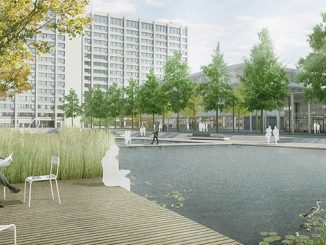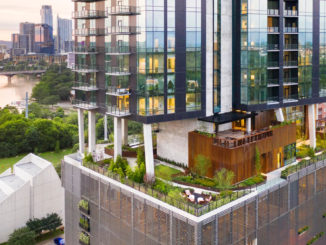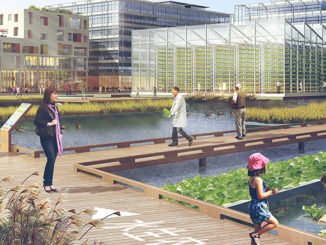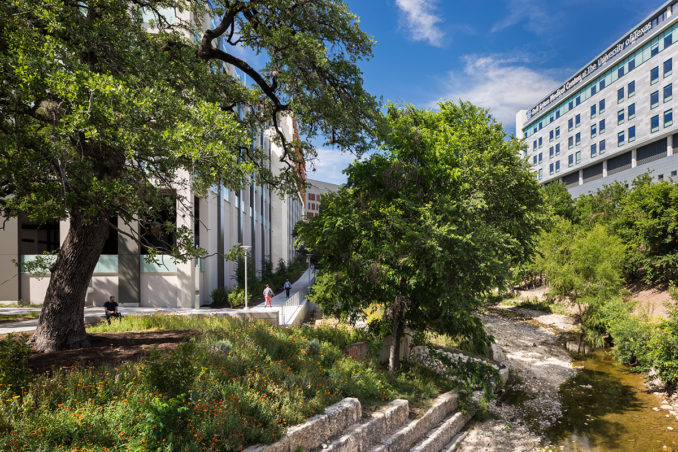
The Dell Medical School and its teaching hospital, Dell Seton Medical Center, are part of a vibrant health district that is one of Austin’s largest development projects. The 16.2-acre development is located in central Austin on the University of Texas campus—serving the faculty, staff, students and visitors of the Dell Medical School and setting a new image and ecological performance standard for the UT Austin landscape.
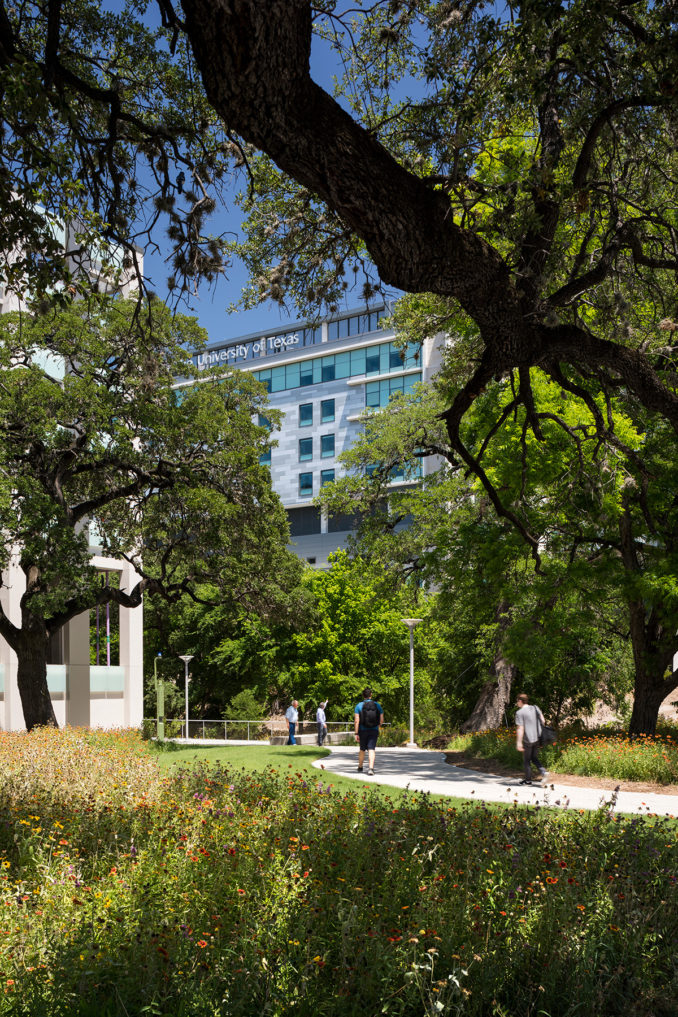
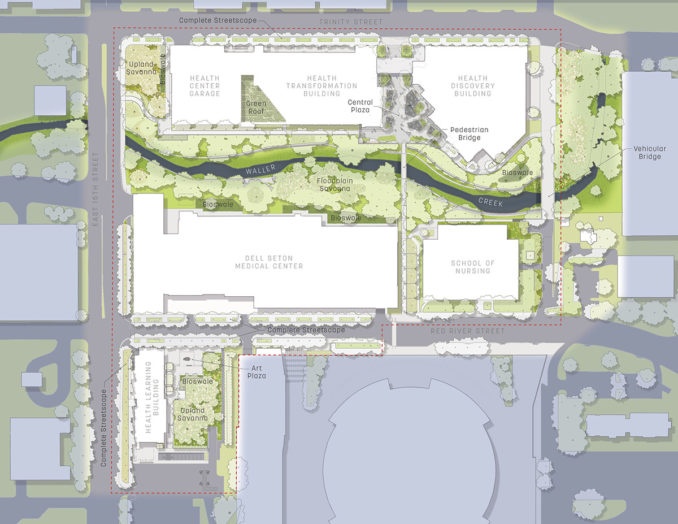
The design process for the Dell Medical District landscape was a seamless extension of two previous years of planning by Sasaki and the consultant team. The team had already developed the 2012 Campus Master Plan, the 2013 Medical District Master Plan, and the 2014 UT Austin Campus Landscape Master Plan and Design Guidelines. The development of the Dell Medical District landscape plan employed the same broad-based, inclusive process that characterized the preceding master plans, furthering established collaborations with those responsible for the development and maintenance of the campus landscape.
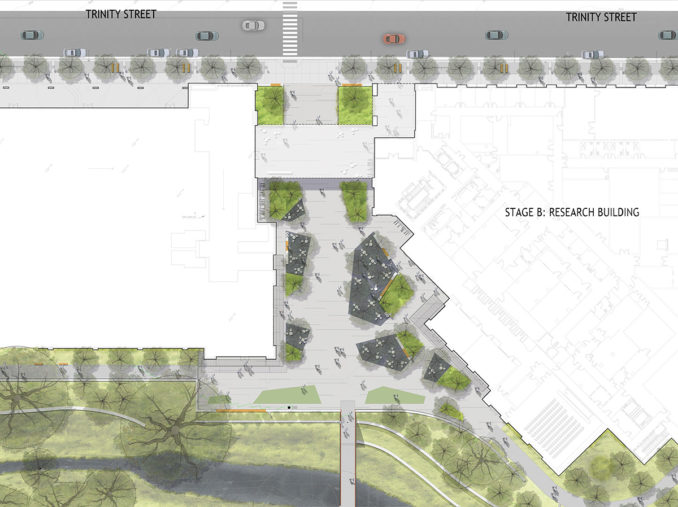
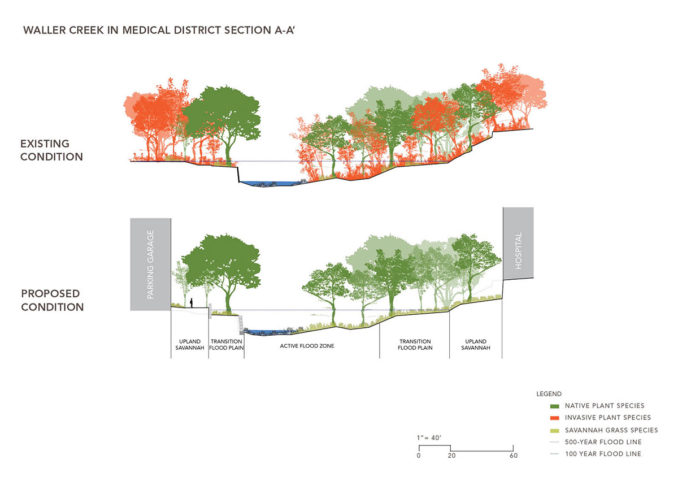
The 2012-2014 University master plans established a framework for campus growth and improvement unique in the campus’s history in scope and depth. The successful implementation of the Health Campus realized the master plan’s comprehensive vision for a coherent district of health-related uses, the reclamation of the Waller Creek corridor, and the strengthening of connections to the City of Austin
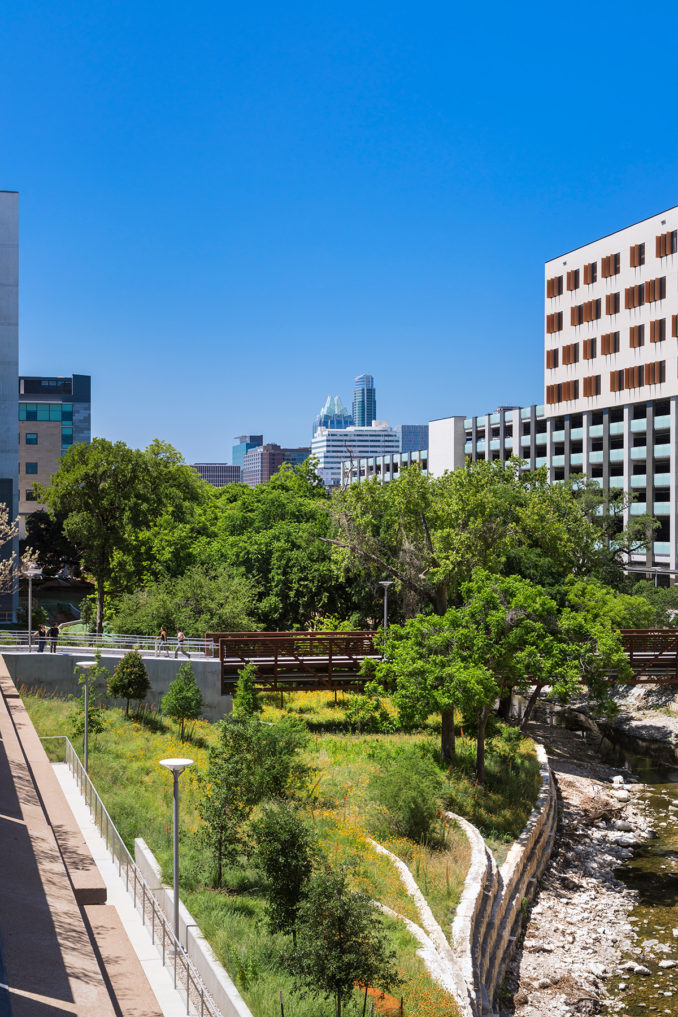
Once neglected, Waller Creek is now celebrated as a campus asset and important connective open space. Reclaiming the medical district segment of the creek is a first step towards the reintegration of this important visual and functional landscape feature into the larger campus.
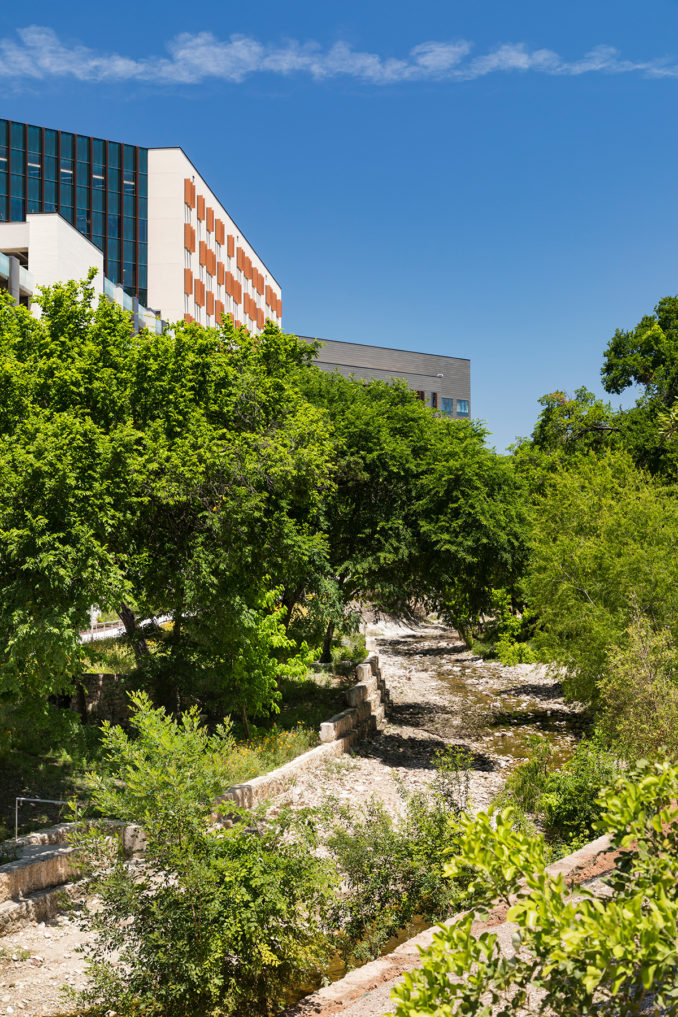
Restoration of Waller Creek was an 18-month long process that included establishing a reference plant community at a nearby Nature Conservancy preserve, the removal of invasive species, stream bank stabilization and the re-vegetation of diverse native riparian and upland communities. The work involved the creation of rain gardens and the remediation of soils for significant areas. Once established, most areas of the campus landscape will not require irrigation.
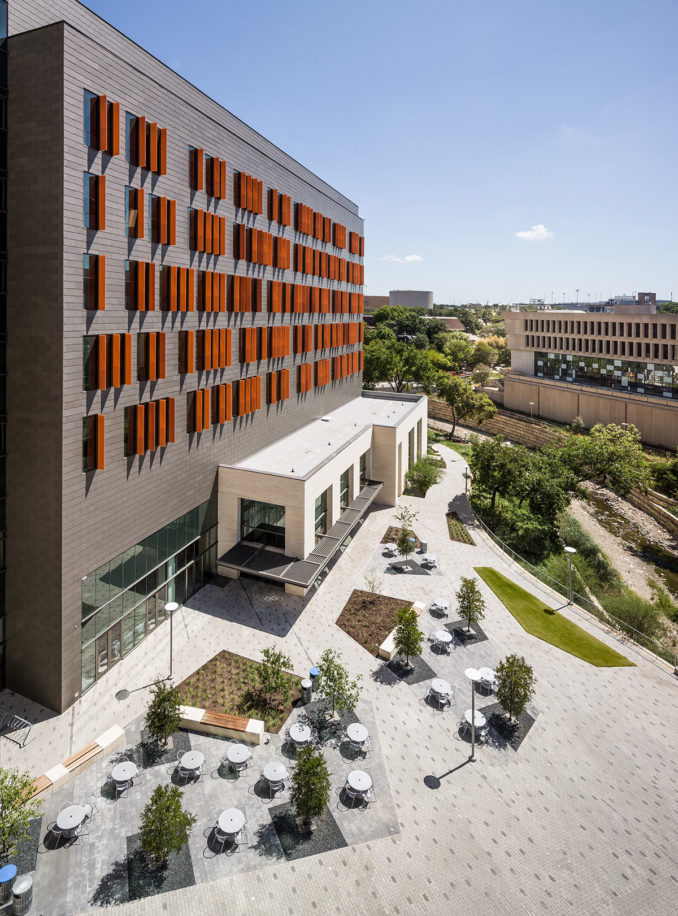
Streetscapes and plaza areas encourage social engagement and connect the campus to its surrounding urban environment. The Medical District landscape plan is designed to enhance ecosystem services and to be a model for a resilient and affordable-to-maintain landscape. Stormwater management features were designed as site amenities to connect visitors to the local climate and hydrology—through a combination of rain gardens, pervious pavers, rainwater harvesting, and a green roof.
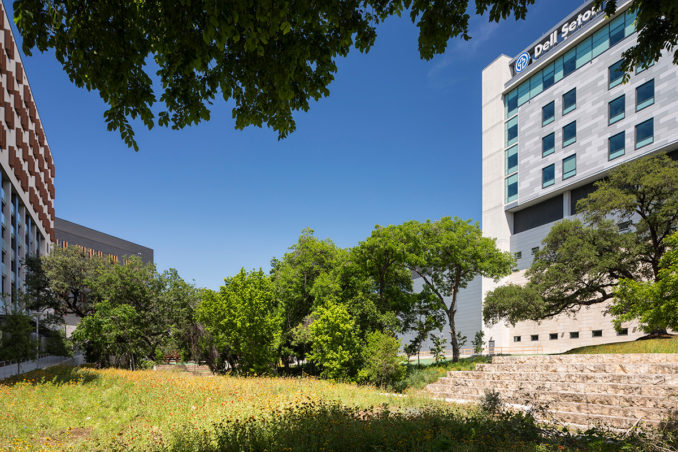
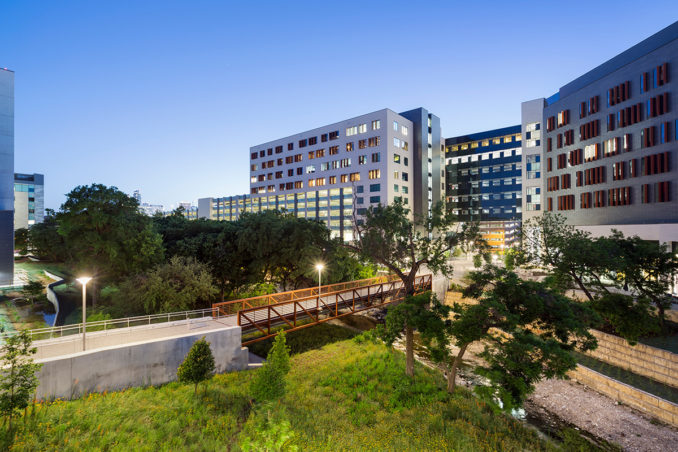
The University’s commitment to the health and well-being of the campus community drove the project to undertake the relocation of 14 mature Live Oak trees. Live Oaks are emblematic features of the historic
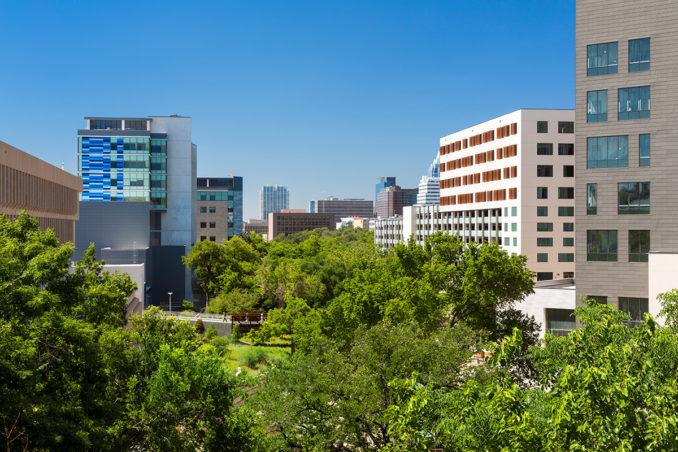
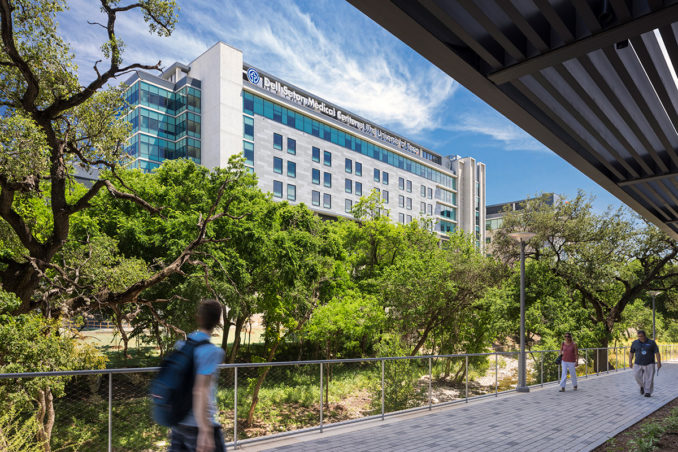
Dell Medical District Landscape
Location | Austin, TX
Size | 16.2 acres
Landscape Architecture – Sasaki
Civil Engineering – Sasaki


